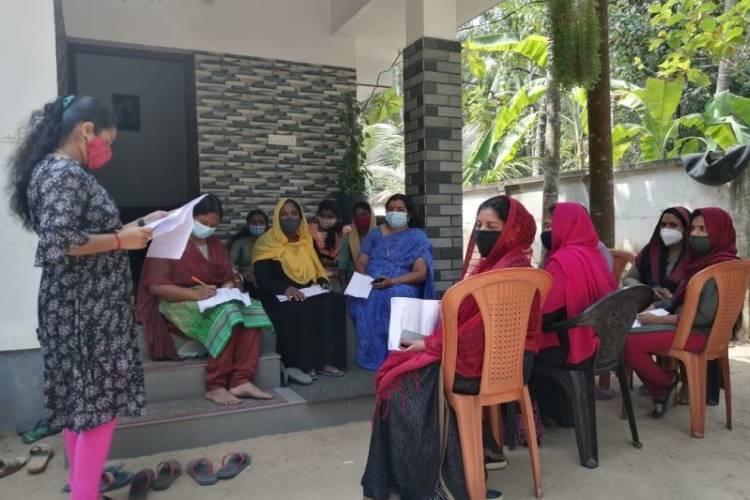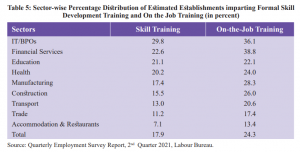
Reaching out to women entrepreneurs: The socio-economic empowerment of women is still a challenge in the hinterlands of Bihar due to a severe lack of skill development, proper education, and employment opportunities. Reaching out to the beneficiaries of projects calls for a robust communication strategy.
I took up a pilot project during the period that followed the first wave of Covid-19 in the districts of Gaya and Nalanda in Bihar to gather specific information to figure out which communication tool works best with young women wishing to establish their own enterprises. The questions were designed around issues of gender parity, social practices, and sensitivities in the context of access to information and communication systems influencing livelihood options. The findings also revealed media habits, media consumption patterns and popular media channels. The indicators and conclusions for propounding a robust communication strategy were drawn up on the basis of the study.
READ I Budget 2022 misses the point on education, innovation
Communication strategy indicators
The overall information, education and communication strategy indicators were identified to provide a framework for determining logical communication goals and expected deliverables.
It was suggested that communications should be focused on a people-oriented developmental approach where the target beneficiaries would have access to information in the easiest possible manner. The study can begin with a mass awareness drive about the legal, social, educational and economic opportunities available to women.
Such generic activities should be followed up with steps for universal inclusion which could include the creation of village-level enterprise clubs, akin to the urban business clubs, though simpler and more informal in scope. Youth facilitators at such clubs can help women entrepreneurs avail finance, mobilise resources, understand policies and government schemes, and gain awareness of their rights and protections. In the future, such clubs could merge with emerging community-level business centres.
READ I Easing of public debt burden will cause economic disruption
Messaging for women entrepreneurs
The success of any communication strategy is dependent on the response of the audience. However, a pre-defined messaging structure is what serves as the guiding principle. The key objectives for the communication campaigns were identified and segregated under various heads such as awareness generation, universal inclusion, and knowledge management and extension of education for employability and livelihood. A set of appropriate messaging ideas were identified under an audience-specific approach matrix for enabling the required IEC strategy.
Information about the project and all other related programs have to be disseminated to the girls and women and their parents, in-laws, spouses and siblings. The involvement of local communities, community-level influencers, village/panchayat-level functionaries, anganwadi workers, lady supervisors, self-help group members and teachers is essential. Endorsements by Child Development Project Officers, NGOs, district administration and local media are also extremely important.
The generic messages will have to align with the new journey from the very beginning. The strategic inclusion of information on gender norms, rights, resistance to atrocities, domestic violence, mass media and its strengths, women-centric issues, and its varied challenges are important.
Messages for universal inclusion should be indicative of the importance of coming together as a club. Influencers, mobilisers, facilitators and endorsers shall be advised to communicate around human rights, social security, gender equality and inclusion in community-level socio-political activities. Family-based livelihood initiatives and livelihood opportunities beyond household work should also be included. During such messaging activities, encouraging husbands, brothers and male family members to support girls/women in their participation in the club activities would be essential. Promoting supportive information and sharing success stories of similar initiatives would be desirable.
READ I India must align export promotion schemes with FTAs
Knowledge management
The knowledge management denominator during the communication process will have to focus on the recognition of women as vital contributors in families and the immediate community. Social issues such as early marriage, unwanted pregnancy, and violent family environments should be highlighted among women and in the immediate community. Women should also be made aware and urged to break their silence on domestic violence. It should also help in accessing legal, administrative and public services and in the overall development of their aspirations.
The impactful and conclusive messages should take the first step towards highlighting the importance of education for women, interspersed with examples of the adverse impact of lack of education.

Women and their family members should be sensitized about the importance of women’s education, besides being made aware of the avenues for enrolment in National Institute of Open Schooling for completion of education. Information on available financing for non-formal education should also be disseminated simultaneously. Facilitators and influencers should be advised to create campaigns for enrolment in education, skill training and livelihood programs. The campaigns should essentially highlight avenues for vocational training, credit facilities, grants, soft loans, benefits of financial inclusion avenues and empowerment programmes.
(The author has over two decades of experience and exposure in project management, strategic business development and operations, majorly impacting livelihoods, non-mainstream rural/ urban transformations, and development initiatives. The pilot framework was drawn up keeping in mind the heterogeneous population present across two blocks in two districts of Bihar and the time period of the study.)
